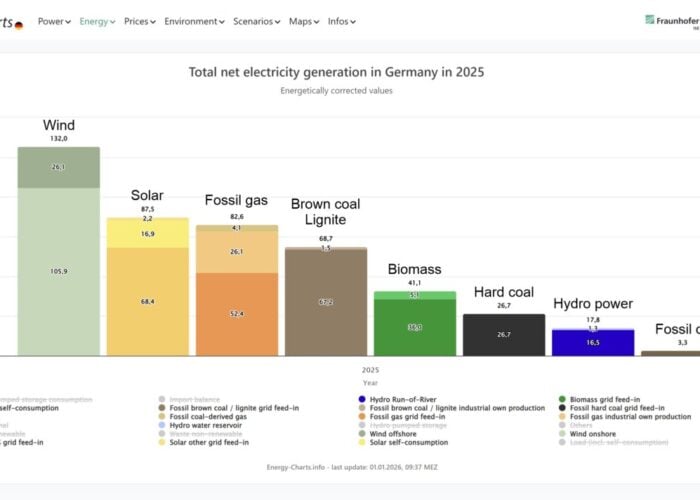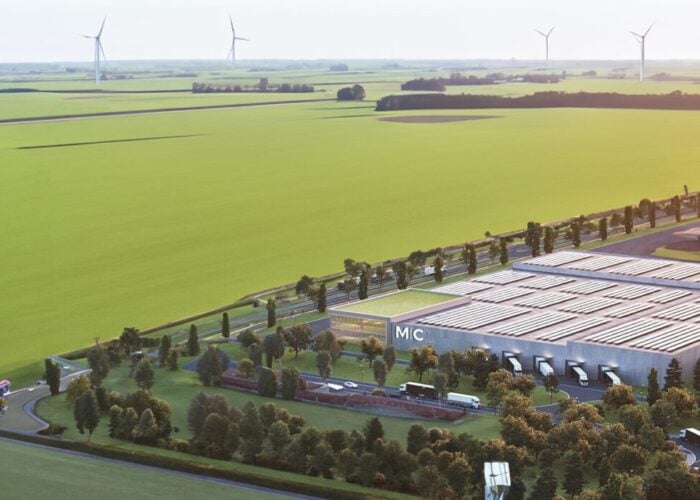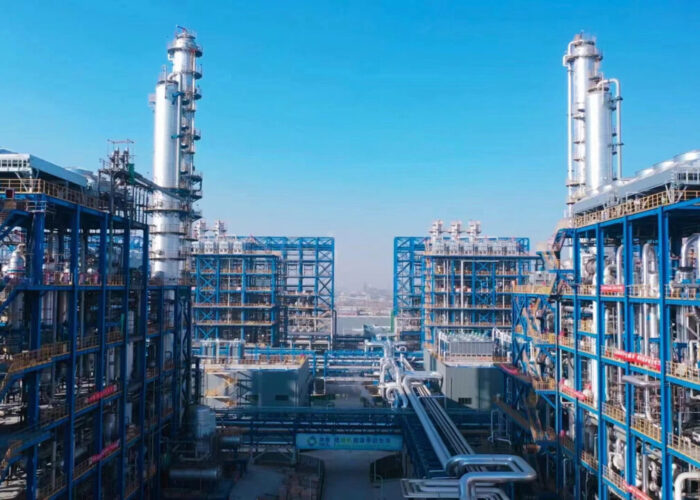Earlier this month, PV Tech visited Europe’s largest solar park, a 300MW project developed by France-based PV developer Neoen, located in Cestas, France.
Try Premium for just $1
- Full premium access for the first month at only $1
- Converts to an annual rate after 30 days unless cancelled
- Cancel anytime during the trial period
Premium Benefits
- Expert industry analysis and interviews
- Digital access to PV Tech Power journal
- Exclusive event discounts
Or get the full Premium subscription right away
Or continue reading this article for free
Looking out from an aeroplane window high above the city of Bordeaux in south-western France, it’s hard to miss a mammoth block of more than 300 football pitches worth of solar panels jutting out of the forest, marking dramatic a change from the Aquitaine region’s famed vineyards. Europe’s largest solar park, standing at a record-breaking 300MW capacity, has been installed at a time of general slowdown in the European solar market, with subsidies slowly but surely being squeezed out of the picture. However, France-based PV developer Neoen managed to complete the park in just 10 months and has now connected it to the grid, marking a major milestone for Europe’s somewhat muffled PV ambitions. It is also nearly three times more powerful than the France’s second biggest plant, which stands at 115MW.
Neoen with several co-investors took on the EUR360 million (US$403 million) project, despite the company’s largest project to date being a mere 13MW-sized plant in Portugal. However, the company’s newest venture comes with another eye-catching claim of being able to sell electricity at a lower rate than the most recent of nuclear reactors in Europe’s pipeline, such as the controversial Hinkley Point C plant planned for the UK.
Guilhem de Tyssandier, the Neoen project manager, who has been on site since the beginning of the construction phase 10 months ago, took PV Tech around the 250-hectare park to take a closer look at the colossal installation. Being located so closely to Bordeaux, a port city sitting on the Garonne River with a population of around 240,000, it is fitting that the Neoen park will be able to produce enough electricity for a quarter of a million people, a number which comes down to a still impressive 150,000 people, if you include heating. This all comes under a 20-year power purchase agreement with the utility EDF.
Despite the power output neatly corresponding with the population levels of Bordeaux, providing the perfect birds-eye symbol of how you only need one large block of solar energy to help power a vast city, the reality is that the plant has been connected to the high voltage network Réseau de transport d’électricité (RTE), which provides electricity across the country.
Construction
Putting together 300MW seems like a tall order when asked to install 15,000 modules each day, along with the daily arrival of 15-20 truck-loads of components, while under pressure to complete the project in time to receive the maximum level of Feed-in-tariff subsidy support, yet it was all completed ahead of schedule. Overall, just under a million panels were needed, coming from three different Chinese manufacturers Trina Solar, Yingli Solar and Canadian solar in order to mitigate the risk of relying on just one supplier.
A consortium composed of Eiffage, its subsidiary Clemessy, Schneider Electric and Krinner, was in charge of the works. Meanwhile, Eiffage and Clemessy were in charge of the global supervision of the works, logistics, civil works and cabling.
In terms of developing the plant, Tyssandier contrasts this enormous project with Neoen’s far smaller 13MW plant in Portugal – adding: “Here we have logistics which are on another dimension.”
Nevertheless, the team experienced few problems with access and supply of components, given the project’s close proximity to Bordeaux’s harbour and its well-developed road network.
The site
The park is located in an area of woodland in Cestas that was partially damaged by strong tempest winds coming from the Atlantic Ocean on the West Coast. As a result almost every part of the plant has had to be designed to withhold the effects of the gales. This includes using aluminium beams and keeping the panels at a low angle to minimise strain, whilst reinforcing the table structures on the west side of each panel as well as all the cables.
The original land owner prepared the site with drainage and tree skirting and the company put in compensatory plantations of pines and other species of trees over 226 hectares of land across the Gironde area. The solar park, which experiences soaring summer temperatures up to 42°C and strong irradiation, is sited on a flat area, requiring only a small amount of levelling by the developers. There is a threat of forest fires, hence the three large wells for fire-fighting on-site. However, the surrounding environment stays relatively green throughout the year; accounting for the region’s far more celebrated wine exports.
East-West
It seems that the Cestas solar park’s design has been an exercise in squeezing as much energy as possible out of the smallest possible space, even if it requires using more modules orientated in a less efficient structure.
What is striking when travelling through the plant is the realisation that all the panels are fitted tightly together in an East-West positioning. Typically a plant in the Northern Hemisphere will have panels facing south in the classic orientation to optimise the amount of irradiation received by each cell and module. Otherwise a tracker is used to follow the suns trajectory throughout the day for even greater efficiency. You might ask why would a developer consider having panels facing East and West?
This method allows for a very high density of panels per hectare and Tyssandier claims the plant is using just 0.8 hectares for 1MW compared to the standard south orientated plant, which generally needs two hectares per Megawatt. This also spreads the load of energy fed to the grid more evenly throughout the day.
The plant is clearly a boon for the large-scale solar industry and the park’s prominence is all the more impacting when you realise that a drone needs to be flown 100 metres above the installation just to be able to see the whole park.
An in-depth ‘Project Focus’ article on Neoen’s Cestas plant will be found in the next print issue of PV Tech Power.






